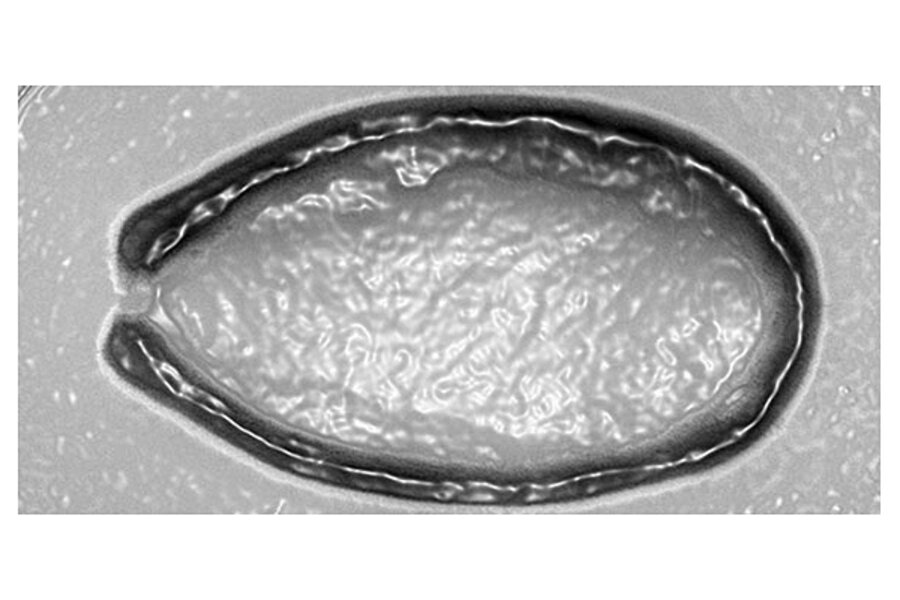Humongous viruses could be new form of life, say scientists
Loading...
The discovery of two new jumbo-sized viruses is blurring the lines between viral and cellular life and could point to the existence of a new type of life, scientists suggest.
The two large viruses, detailed in this week's issue of the journal Science, have been dubbed "Pandoraviruses" because of the surprises they may hold for biologists, in reference to the mythical Greek figure who opened a box and released evil into the world. The discovery of Pandoraviruses is an indication that our knowledge of Earth's microbial biodiversity is still incomplete, explained study coauthor Jean-Michel Claverie, a virologist at the French National Research Agency at Aix-Marseille University.
"Huge discoveries remain to be made at the most fundamental level that may change our present conception about the origin of life and its evolution," Claverie said. Eugene Koonin, a computational evolutionary biologist at the National Center for Biotechnology Information in Bethesda, Md., who was not involved in the study, called the Pandoraviruses a "wonderful discovery," but not a complete surprise. "In a certain sense, it's something that we saw coming, and it's wonderful that it has come," Koonin said.
A systematic search
Claverie's lab found one of the viruses, Pandoravirus salinus, in sediments collected off the coast of Chile. The other,Pandoravirus dulcis, was lurking in mud in a freshwater pond near Melbourne, Australia. Both of the new viruses are so massive that they can be seen using a traditional light microscope. Their genomes are also super-sized: the genome of P. salinus is 1.91 million DNA bases long, while that of P. dulcis is 2.47 million DNA bases. For comparison, the size of the previous viral genome record holder, Megavirus chilensis, is 1.18 million bases. M. chilensis is a marine relative of Mimiviruses, a class of large viruses that was first discovered more than a decade ago and forever changed scientists' conceptions of how large viruses could be. After sequencing the first Mimivirus genome in 2010, Claverie and his team began a systematic search for even larger viruses. They found P. salinus in the same environment in Chile where M. chilensis was found. The discovery of P. dulcis was more serendipitous, being the result of water sample Claverie took during a trip to Melbourne. At first, the French scientists thought both viruses were the same. But after comparing the two genome sequences and their encoded proteins, they realized that the pair represented a new virus family, said Claverie.
What are they?
The team also conducted several experiments to confirm that Pandoraviruses were indeed viruses. Using light and electron microscopes, the scientists followed their newfound entities through a complete replication cycle. The gigantic entities met allthree key criteria to be labeled viruses. First, instead of splitting in two like typical bacterium or cells, the Pandoraviruses spawned hundreds of new copies in one cycle. Secondly, they both lacked the genes needed for energy production. Finally, they could not produce proteins without infecting single-celled organisms known as amoebas, which seem to be the Pandoraviruses' preferred hosts. Further surprises awaited the team when they analyzed the Pandoraviruses' genomes. That of P. dulcis contained about 1,500 genes, while that of P. salinus contained more than 2,500 genes. A typical flu virus can have as few as 10 genes, and M. chilensis has only about 1,000 genes. What's more, scientists don't know what most of the Pandoravirus genes do. There are "a few recognizable genes involved in DNA replication, and a few transcription-related genes. Not much else is recognizable," explained study co-first author Matthieu Legendre, who is also at CNRS. The Pandoraviruses are also unlike other viruses in that they lack the gene for the capsid protein that typically forms the housing, or "capsid," of giant viruses.
The fourth domain
These irregularities raise interesting questions about the origins of Pandoraviruses, scientists say. According to a theory preferred by Claverie and his team, the ancient ancestors of Pandoraviruses were once free-living cells that gradually lost most of their genes as they became parasites. Some scientists think this hypothetical ancestral cell could have constituted a so-called "fourth domain" of life — that is, a previously unknown branch of life that is distinct from the accepted three domains: Bacteria; Archaea, another type of single-celled organism; and Eukaryotes, the domain that animals and plants belong to.
Practical applications
Claverie and his team are now on the hunt for other Pandoraviruses to unravel their evolutionary origins and better study their genes. "These viruses have more than 2,000 new genes coding for proteins and enzymes that do unknown things, and participate in unknown metabolic pathways," explained virologist and study coauthor Chantel Abergel, who is also at CNRS. "Elucidating their biochemical and regulatory functions might be of a tremendous interest for biotech and biomedical applications," she added. The scientists have reason to believe that many more Pandoraviruses await discovery. "The fact that two of them were found almost simultaneously from very distant locations either indicate that we were incredibly lucky," Claverie said, "or that they are not rare."
Originally posted on Inside Science.







